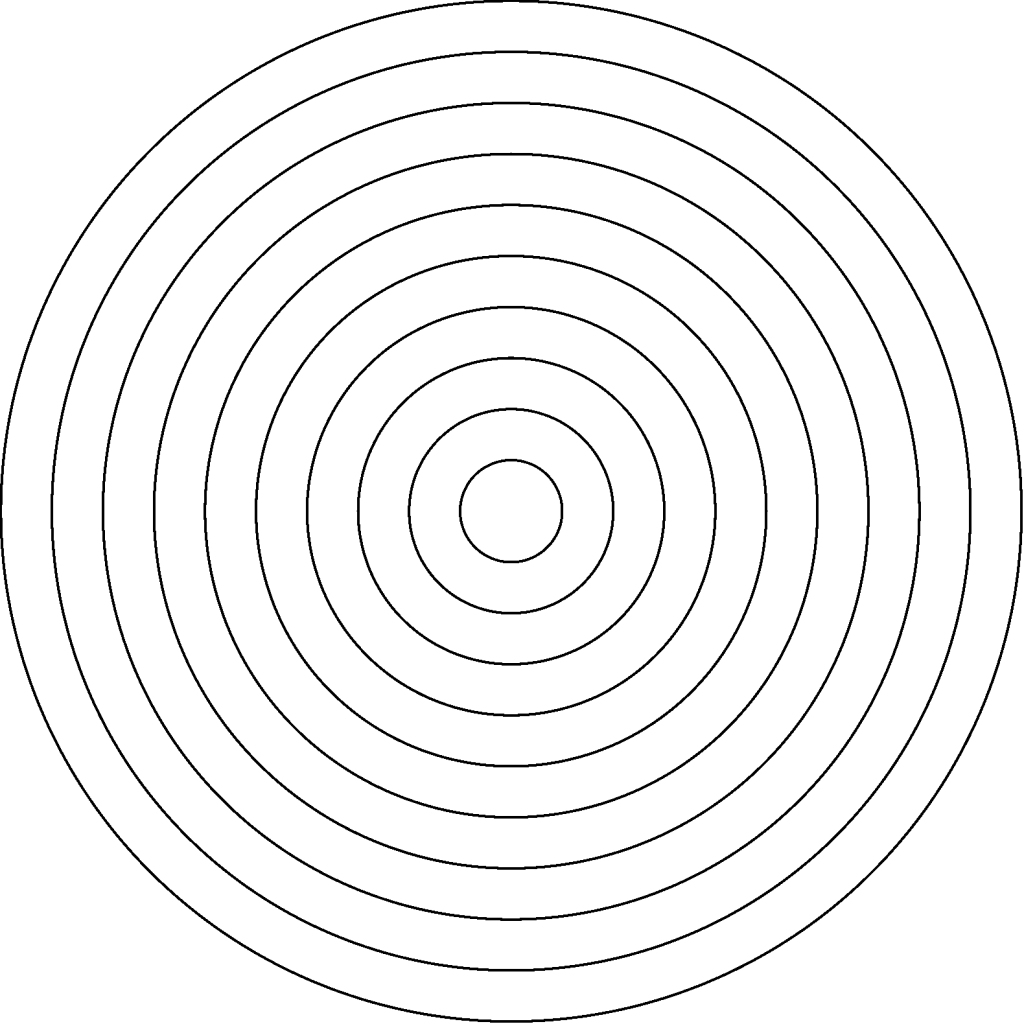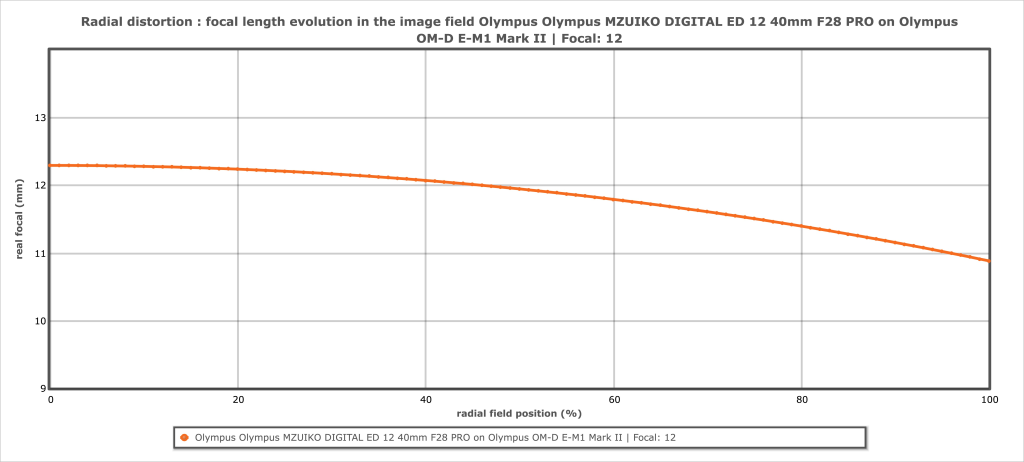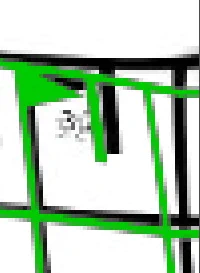I was a bit surprised to find that Lenstip isn’t a big fan of the new 16-35GMII (I read the conclusion first). Did Sony f$ck this up? But after reading the full review honest I’m confused. One particular interesting thing is that Lenstip always seems to hate mustache distortion very much. I have no idea why because as long as you have a lens profile then mustache distortion is actually the best kind of distortion, leading to less resolution loss in the corner of the image. Let me explain why…
Usually this is how distortion is presented:

But this is actually not straightforward at all… If we draw some concentric circles such as shown below, where the radius difference between two adjacent circles are always constant:

Then this is barrel distortion:

So basically when you go from the center to the edge of the frame the radius difference just keeps getting smaller.
To put it in another way, it is the focal length of the lens getting smaller and smaller toward the edge of the frame, causing the magnification of a subject to shrink. The pincushion distortion is basically the opposite (focal length getting longer toward the edge).
Our old friend DXOMark is actually quite useful here, this is how they present barrel distortion:

So the focal length is about 12.3mm in the center but less than 11mm in the corner. Here is the corresponding image, in the format that everyone is familiar with:

To correct the distortion basically you need to make the focal length level across the frame again. Here we need to select a target focal length first. You don’t want it to be too long, for example you can certainly correct a 14mm image to a 100mm image, but you’ve cropped too much stuff and lost too much resolution. Here we need the “minimum cropping principle”, which means the target focal length should be the longest focal length after the 55% radial field position.
Why 55%? Because this is where you touch the edge of a picture with 3:2 aspect ratio:

Beyond this point you can’t correct a 14mm lens to a 13mm one because you don’t have the information to work with.
Take the example we’ve shown previously, the strategy here is to correct this lens to approx 11.8mm:

So for the radial field > 55% you have to scale up the image, which means you lose sharpness. The bigger difference between the real focal length and the target focal length, the more sharpness you lose from the digital correction. Hence the worst part is always in the corner for barrel distortion.
For < 55% you have to scale down the image, which means your image will actually look sharper… but scaling down also means the loss of resolution, so you have to scale up somewhere to keep the total resolution the same. There is no free lunch.
Now let’s look at the correction of pincushion distortion:

Given the focal length just keeps rising you have no choice but to correct the image to the highest point, which is around 92mm. You have to scale up starting from the center of the image, and the center is exactly where you have the maximum sharpness loss!
Interesting hmm? It’s actually not that bad in reality. Here 92mm/86mm = 106% scale up, this is actually better than the lens we showed before (11.8mm/10.9mm = 108% scale up). It’s just DXOMark cutting the vertical axis.
Now mustache distortion’s turn.
Mustache distortion is basically barrel in the center but then turned to pincushion or no distortion toward the edge. What it actually does is to prevent the barrel distortion from further deterioration, hence reducing the amount of digital correction at the corner. Here is the infamous Samyang 14F2.8:

I draw the red line to show you that without the pincushion turning point things could be even worse. The image scales down in the center of the frame and only do some minor scale up in the corner, hence minimize the sharpness loss.
Here is another example:

The green grid represents a lens with 8.6% barrel distortion while the black one is 10.2% mustache distortion (all rated by Imatest). Judging from the number it seems like the black one is worse, but if you zoom into the corner then it’s quite obvious that the black lens needs much less digital correction here:

The Imatest rating is based on how far a pixel is displaced from its “correct position”. Quite useless TBH.
I understand that mustache distortion is a pain in the ass if you have to do manual distortion correction (practically impossible) but in the great age of digital correction it’s really not anyone’s concern. If you have to sacrifice the distortion to gain size/weight advantage then mustache is certainly better than either barrel or pincushion. It’s like barrel is going left and pincushion is going right. You combine both and then you stay in the center. Happy ending.
And a few word about the new GM.
There are some flaws for sure. The flare resistance doesn’t look that good and it’s indeed strange that a mark II GM lens has onion rings in the bokeh ball(my impression based on previous Sony lenses is that onion ring is a G lens thing). But given the overall sharpness especially at the corner, the big boost in magnification, good coma and CA correction, the reduction in size/weight, I’d say this is another victory from Sony’s lens department. Heck even the focus breathing is fixed, this really surprises me because nowadays Sony cameras already have built-in I-can’t-breath.
I had three complaints about the gen 1 lens:
1: Huge ring-shape flare when the sun is in the middle of the frame
2: QA issue at 35mm. Returned my first one because 35mm is too weak. The second one is workable but still got beaten by a Tamron 17-28 cropped to 35mm
3: Huge focus breathing (a pain in the ass for focus stacking, combined with the lack of automatic focus stacking on old Sony cameras)
So at least two of the issues are solved. Don’t know about the QA. Let’s see.
